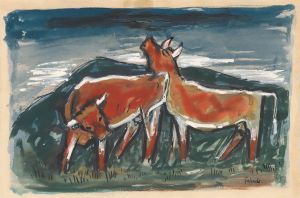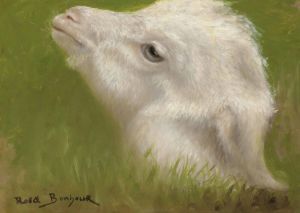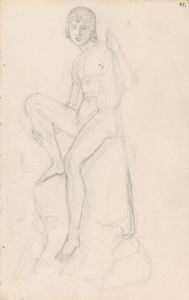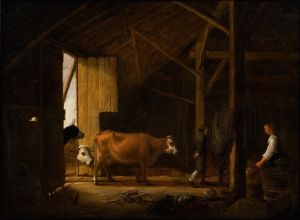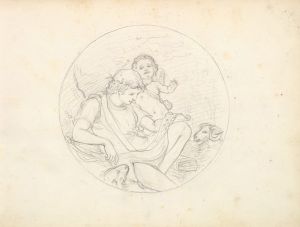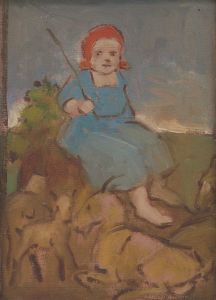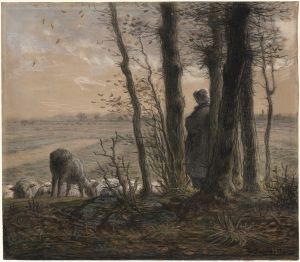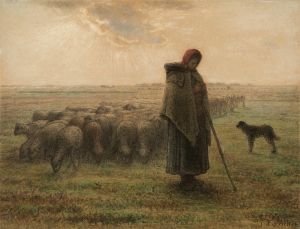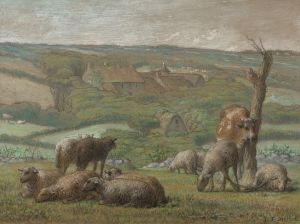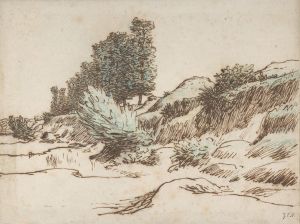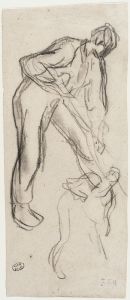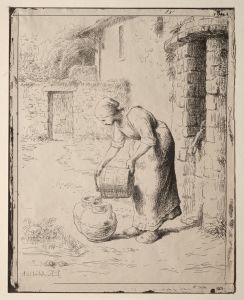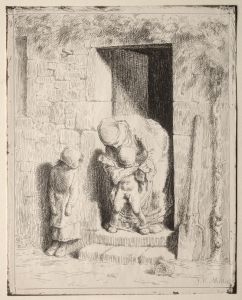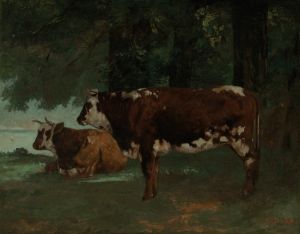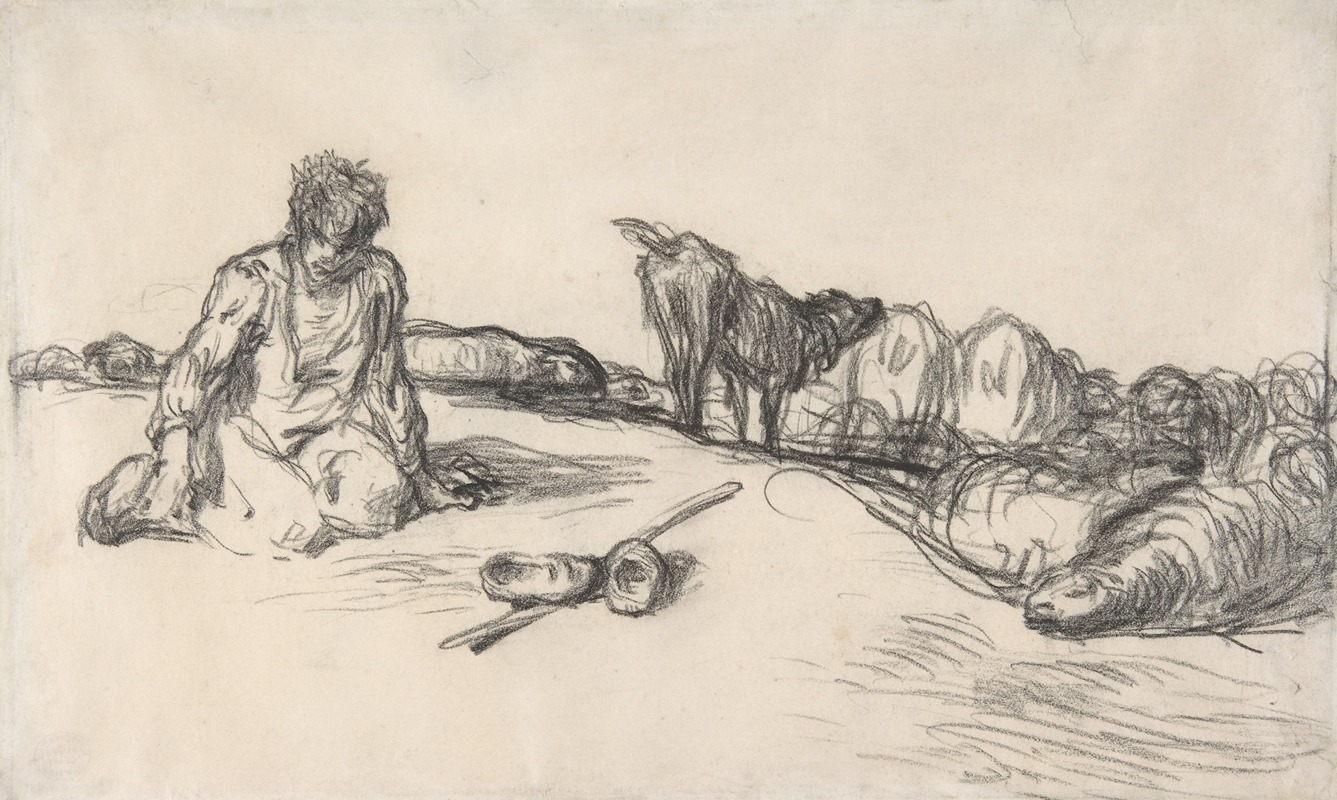
A Seated Shepherd with His Dog and Sheep
A hand-painted replica of Jean-François Millet’s masterpiece A Seated Shepherd with His Dog and Sheep, meticulously crafted by professional artists to capture the true essence of the original. Each piece is created with museum-quality canvas and rare mineral pigments, carefully painted by experienced artists with delicate brushstrokes and rich, layered colors to perfectly recreate the texture of the original artwork. Unlike machine-printed reproductions, this hand-painted version brings the painting to life, infused with the artist’s emotions and skill in every stroke. Whether for personal collection or home decoration, it instantly elevates the artistic atmosphere of any space.
"A Seated Shepherd with His Dog and Sheep" is a painting by the renowned French artist Jean-François Millet, who was a prominent figure in the Realism art movement in the 19th century. Millet is best known for his depictions of rural life and peasant scenes, which often highlight the dignity and labor of the working class.
This particular painting, "A Seated Shepherd with His Dog and Sheep," exemplifies Millet's focus on pastoral themes and his ability to capture the serene yet hardworking life of rural inhabitants. The artwork features a shepherd seated on the ground, accompanied by his faithful dog and a small flock of sheep. The shepherd appears to be in a moment of rest, gazing thoughtfully into the distance, while his dog remains alert and watchful, emphasizing the bond between the shepherd and his loyal companion. The sheep are scattered around, grazing peacefully, which adds to the tranquil atmosphere of the scene.
Millet's use of earthy tones and naturalistic details in this painting reflects his commitment to portraying the authenticity of rural life. The composition is balanced and harmonious, with the shepherd positioned centrally, drawing the viewer's attention to the human element within the landscape. The background is rendered with a soft focus, suggesting a vast, open countryside that extends beyond the immediate scene.
Jean-François Millet was born on October 4, 1814, in Gruchy, a hamlet in the commune of Gréville-Hague, Normandy, France. He grew up in a farming family, which deeply influenced his artistic vision and subject matter. After receiving initial training in Cherbourg, Millet moved to Paris to further his studies at the École des Beaux-Arts under the tutelage of Paul Delaroche. Despite facing financial difficulties and initial resistance from the Parisian art establishment, Millet continued to pursue his passion for depicting peasant life.
Millet's work gained significant recognition and appreciation later in his career, particularly after he settled in Barbizon, a village near the Forest of Fontainebleau. There, he became associated with the Barbizon School, a group of artists who shared a common interest in painting rural landscapes and scenes of everyday life. Millet's paintings, including "The Gleaners" and "The Angelus," are celebrated for their poignant portrayal of the hardships and nobility of peasant labor.
"A Seated Shepherd with His Dog and Sheep" is a testament to Millet's skill in capturing the quiet dignity of rural life. The painting is characterized by its realistic portrayal of the shepherd's attire, the textures of the sheep's wool, and the natural setting. Millet's empathetic approach to his subjects invites viewers to appreciate the simplicity and resilience of the rural existence.
The exact date of creation for "A Seated Shepherd with His Dog and Sheep" is not definitively recorded, but it is consistent with Millet's body of work from the mid-19th century. The painting is held in various collections, and its reproductions can be found in art history books and exhibitions dedicated to Millet's oeuvre.
Jean-François Millet passed away on January 20, 1875, in Barbizon, leaving behind a legacy that continues to influence and inspire artists and art lovers worldwide. His dedication to depicting the lives of ordinary people with respect and realism has cemented his place as a pivotal figure in the history of art.





